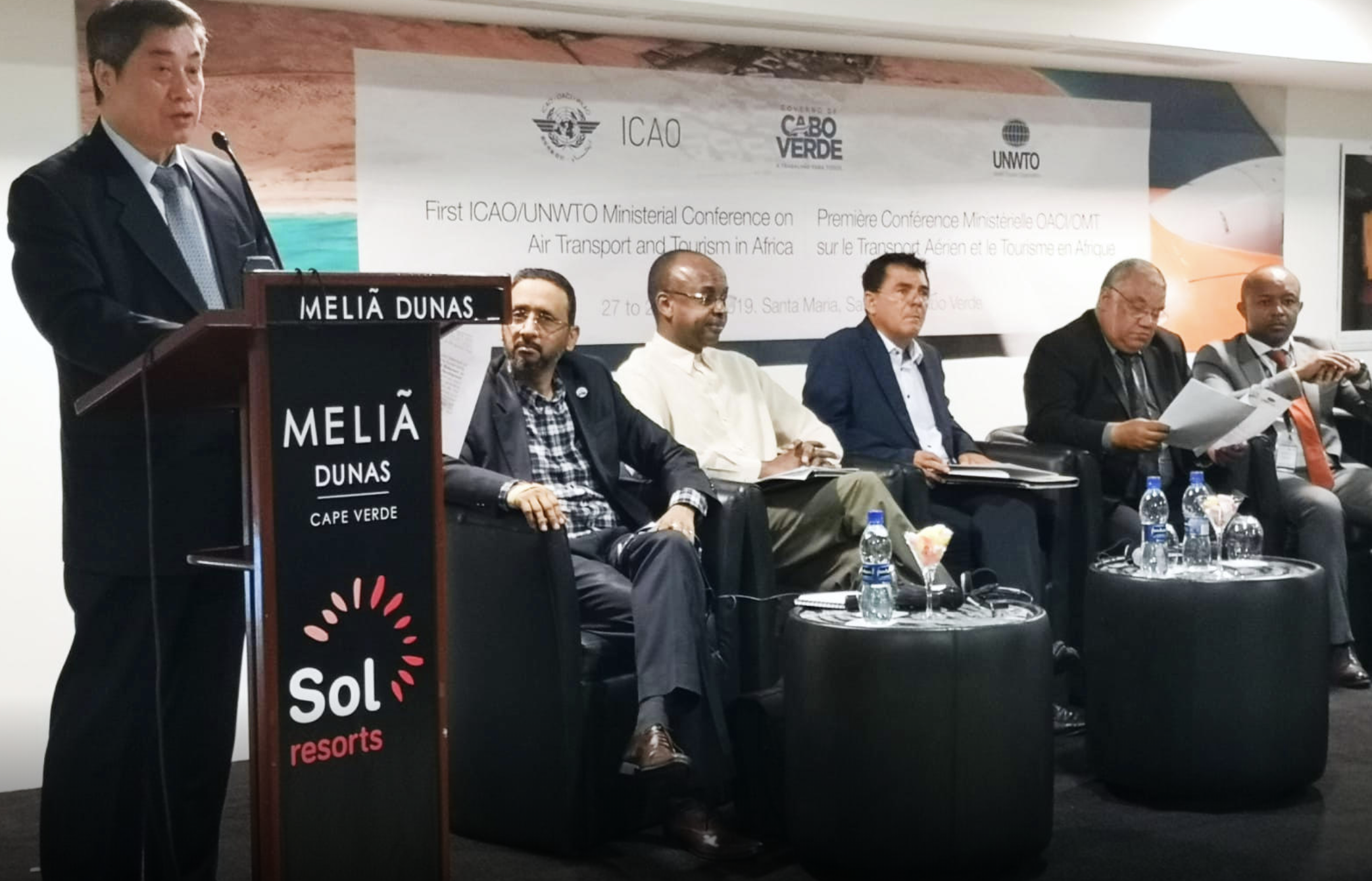
What is the discussion at the UNWTO / ICAO Ministerial Conference on Tourism and Air Transport?
A Panel discussion is ongoing and a packed program are planned today for delegates in Sai Island, Cabo Verde attending the First UNWTO/ ICAO Ministerial Conference Tourism and Air Transport.
Air Transport and Tourism Policies: Regulatory convergence to maximize and balance their benefits
Air Transport and tourism depend heavily on each other and are essential engines of trade and economic growth for both developed and developing countries.
Despite the synergies, there can be conflicts between aviation and tourism policies due to the difficulties of States in balancing the interests of their airlines and the optimum development of their tourism industries. Separate sectorial policies result in a fundamental disconnect, which constitutes a severe deterrent towards the development of both sectors. How do we enhance policy coherence between the two sectors, harmonize the regulatory frameworks, and prevent separate sectoral policies? How can we strike a balance to maximize the overall benefits of tourism and air transport in the national economy?
What is the current status of Africa’s regulatory framework and what is its impact on tourism and air transport (the Lomé Declaration and the related Action plans both for Air Transport and for Tourism?
How can Africa benefit from and implement the joint UNWTO and ICAO Medellín Statement on Tourism and Air Transport for Development? How can the African Governments promote cooperation and compatible decision-making among transport and tourism authorities and other ministries in charge of related portfolios, including finance, economic planning, energy, environment and trade?
What are the challenges encountered by tourism stakeholders in reflecting tourism business interests in national and regional air transport policies?
Connectivity and Seamless Travel: Best practices to serve tourists and passengers
Aviation and tourism are a customer-focused economic sector.
While there is no single definition of air connectivity, it can be viewed as the ability of a network to move passengers involving the minimum of transit points, which makes the trip as short as possible with optimal passenger satisfaction at the minimum price possible. The realization of seamless travel can improve overall travel experience, which in turn fuels tourism demand.
With the recent launching of the Single Africa Air Transport Market (SAATM), open skies over Africa may soon be a reality, building the necessary regulatory framework to increase international intra-Africa travel.
How do we optimize the flow of passenger traffic through the air transport system? How can we generate sufficient demand for direct air services between African sub-regions, especially between the East-West coasts?
How well do current air service agreements (ASAs) contribute to connectivity and what are the prospects of air transport liberalization? What constitute the bottlenecks and slowdowns of seamless travel in the air transport system? What regulatory schemes can be used or developed to assure essential air services to Least Developed Countries (LDCs), Landlocked Developing Countries (LLDCs) and Small Island Developing States (SIDS)?
What are the existing best practices and how could they be extended and adapted to other regions? What are the factors influencing airline choices for different market segments (the intercultural dimension)?
Funding and Financing for Development: Pragmatic measures to build a transparent, stable and predictable investment climate
Infrastructure deficiencies in the aviation and tourism sectors have long been an issue in Africa. While plans are in place to develop and modernize aviation infrastructure, relief is years away at best.
In the meantime, there will be lost opportunities for creating jobs and spurring economic growth. Another issue is the proliferation of taxes on tourism and air transport despite the fact that the industry recovers a vast majority of its own infrastructure costs through payments of user charges, rather than being financed through taxation.
Revenue raised by taxes can often be outweighed by the relinquished economic benefits as a result of dampened demand for air travel.
This Session will focus on
a) the creation of good governance and enabling the environment to build business confidence and encourage investments, and
b) the consolidation of planning and development efforts for aviation and tourism infrastructure in multi-modal and urban planning initiatives. What are the challenges of financing development projects related to the tourism and air transport sectors, particularly in LDCs, LLDCs, and SIDS?
What are the success stories in financing tourism and air transport projects? How do consumers perceive taxes, charges, and others levies and how to ensure transparency of taxes and charges to passengers and tourists?
Why is the limited volume of international public finance and assistance for development currently available for aviation and tourism infrastructure projects?
Travel Facilitation: Advancing visa facilitation in supporting economic growth
Travel facilitation aims at maximizing the efficiency of border clearance formalities while achieving and maintaining high-quality security and effective law enforcement. Allowing passengers/tourists to cross international borders safely and efficiently contributes significantly to stimulating demand, enhancing the competitiveness of States, creating jobs and fostering international understanding.
In spite of the great strides made in recent decades in facilitating tourist travel in Africa, there is still room for considerable progress. For example, electronic visa processes and delivery could make travel more accessible, convenient, and more efficient without a diminution of national security.
States should also look into increasing cooperation on bilateral, regional and international travel facilitation regimes. How can new technologies be used to make travel more accessible, convenient and efficient? How to define and implement policies which facilitate international travel and tourism while ensuring the security and integrity of traveler identification and border controls?
How well do e-passports, e-visas and other documentation deal with emergent threats to security? How could the African States learn from other effective best practices?
